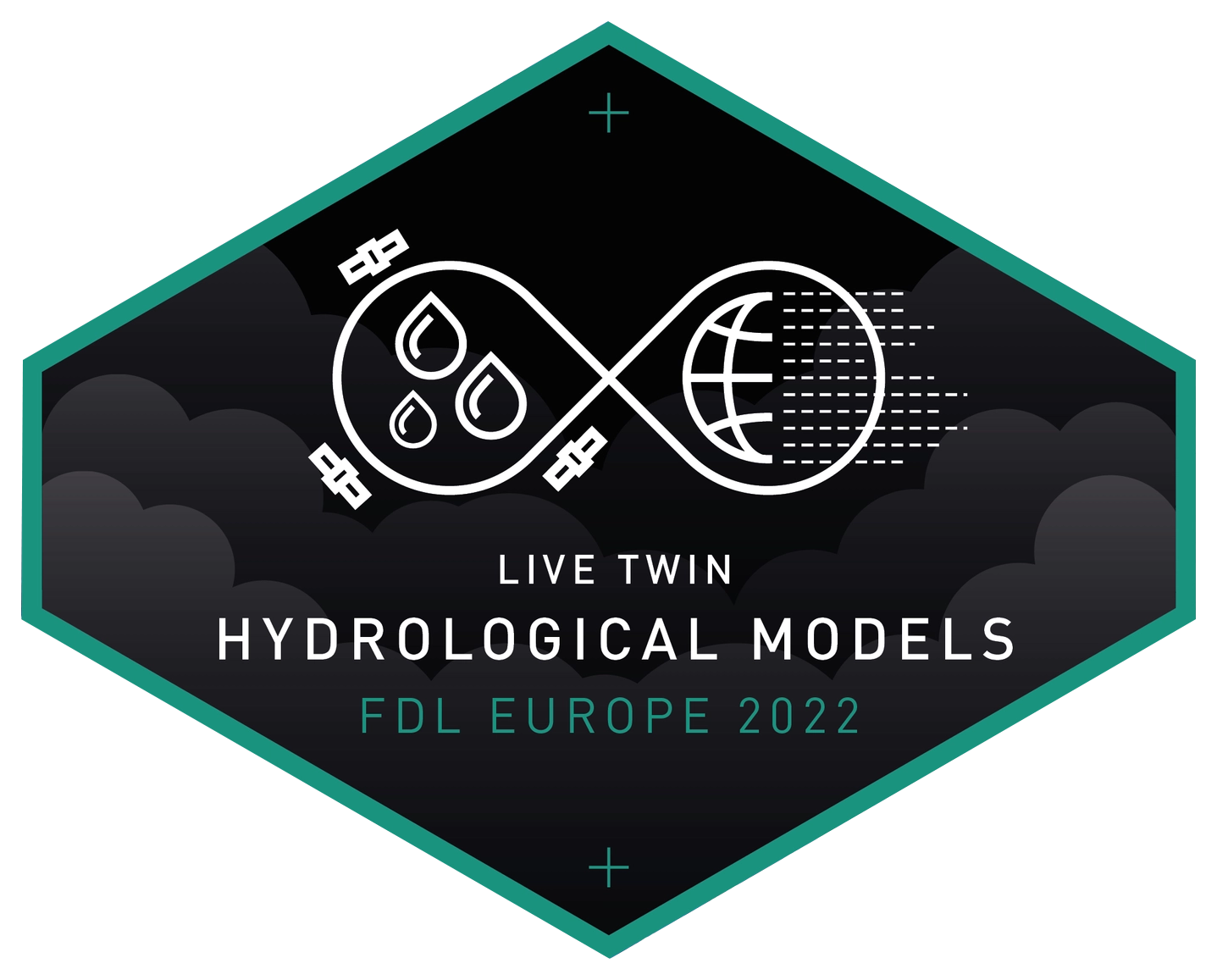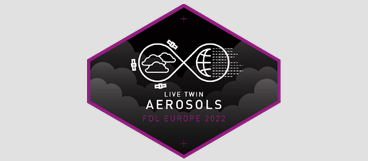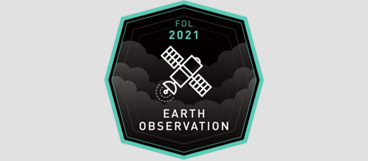FDL Europe is a public - private partnership between the European Space Agency (ESA), the University of Oxford, Trillium Technologies and leaders in commercial AI supported by Google Cloud, NVIDIA and Scan AI. FDL Europe works to apply AI technologies to space science, to push the frontiers of research and develop new tools to help solve some of the biggest challenges that humanity faces. These range from the effects of climate change to predicting space weather, from improving disaster response, to identifying meteorites that could hold the key to the history of our universe.
FDL Europe 2022 was a research sprint hosted by the University of Oxford that took place over a period of eight weeks in order to promote rapid learning and research outcomes in a collaborative atmosphere, pairing machine learning expertise with AI technologies and space science. The interdisciplinary teams address tightly defined problems and the format encourages rapid iteration and prototyping to create meaningful outputs to the space program and humanity.












Live Twin - Hydrological Models
Project Background
Floods can have a devastating effect on human lives, nature, and economies - between 1995 and 2015 over 2.6 billion people were affected by floods, comprising 56% of total people affected by weather related disasters. As flood phenomena become increasingly frequent and severe, better preparedness and mitigation strategies become necessary. According to the United Nations, reliable 72-hours-ahead predictions of river floods are vital, as they allow emergency agencies sufficient time to prepare, plan their mitigation strategies and deploy response teams on site. Such river flood prediction models already exist and perform relatively well in most high-income countries. However, these models are lacking in low-income countries due to limited data availability, where there is often the greatest flooding risk.
In recent years there have been initiatives to establish CAMELS (Catchment Attributes and Meteorology for Large-sample Studies) datasets at national levels and the UK, USA Australia, Chile and Brazil have these CAMELS datasets readily available - however they are not standardised and do not share the same attributes. More recently the Caravans (named after a series of camels) dataset has been published in an attempt to bring all other hydrological data into a single standard format with shared features and global coverage. This Caravans dataset was the starting point for the FDL team to set about developing the first end-to-end global river flood prediction framework, and its coverage is illustrated in the diagrams below.
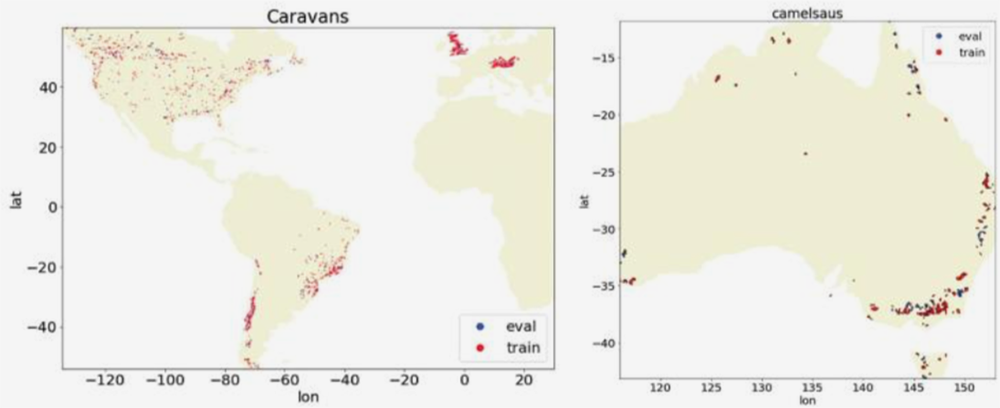
For each of the highlighted river basins on the maps, data includes a time series of gauge measured streamflow, 40 ERA5 (the ECMWF or European Centre for Medium Range Weather Forecasts Re-Analysis in its 5th generation) dynamic variables and corresponding climatic indices; and a collection of static attributes from HydroATLAS labs.
Project Approach
As the Caravans dataset doesn't contain information for Africa or Asia, where a great number of flood-susceptible countries are located, the FDL team sought to expand the Caravans scope with an additional 195 random locations across these continents, as shown in the below diagram. As accurate streamflow measurements were not available for these locations, discharge figures, in m3/s, from the Global Runoff Data Centre (GRDC) were used and then converted to streamflow measurements, in mm/day, by analysing the available basin shape files from ERA5.
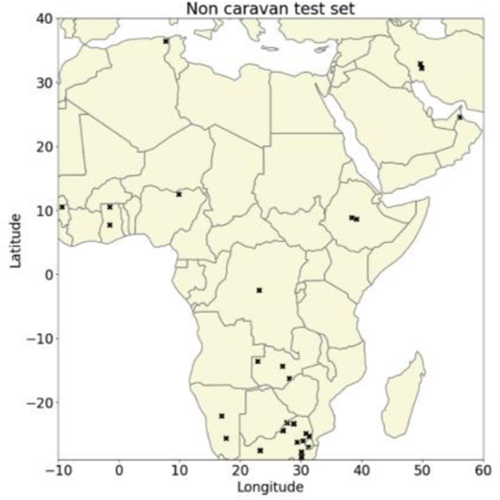
Using these newly calculated datasets, a pipeline was developed that covered all the necessary steps to obtain ML-ready data from the raw hydrological dataset - linear regression, random forest regression and deep Markov Chain neural networks. This preprocessing pipeline was designed to be highly flexible allowing for chunking and splitting of the data. The data loader is also flexible so models can be trained with different partitions and learning settings. Finally, a novel neural network Long Short Term Memory (LSTM) architecture was then designed that focused on a separate treatment of static and dynamic inputs. The dynamic variables include time series information, such as meteorological forcing and hydrological signatures, while the static variables include catchment attributes and climatic indices. This two path Long Short Term Memory (2P-LSTM) network is shown below.

Machine learning benchmark models were then generated that targeted two important goals - firstly, three days ahead streamflow prediction in known basins and climate zones and secondly, spatial generalisability so the models can be applied to unseen basins and unseen climate zones. The resulting streamflow evaluations and predictions were pulled together to form floodcast AI - the first benchmark pipeline for global river flood predictions.

0 Days ahead

1 Days ahead
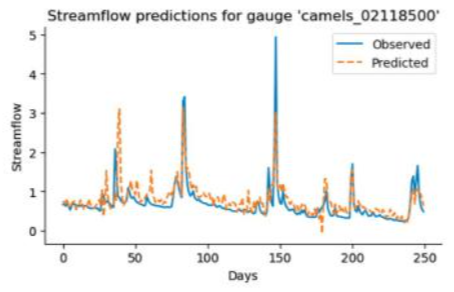
2 Days ahead
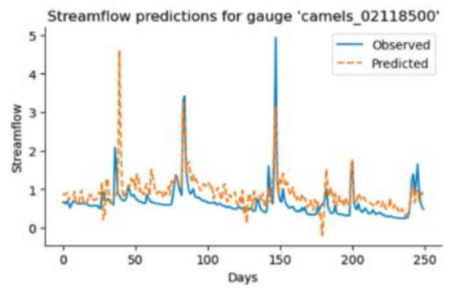
3 Days ahead
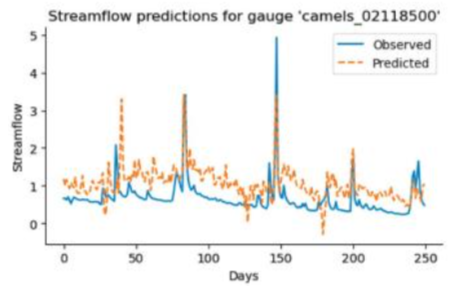
Project Results
The Hydrological models FDL team was able to predict with good accuracy the flood risk one day ahead of time. The models also demonstrated accurate high peak flow locations although the magnitude of these peaks was not so well defined. With unseen basins and climate zones the models also performed well, supporting the generalisability claim and the need to train models with globally available data. The team developed a pipeline that covered all the necessary steps to obtain ML ready data from the raw hydrological data set, and furthermore developed models targeted at accomplishing two important goals - three days ahead prediction and with spatial generalisability.
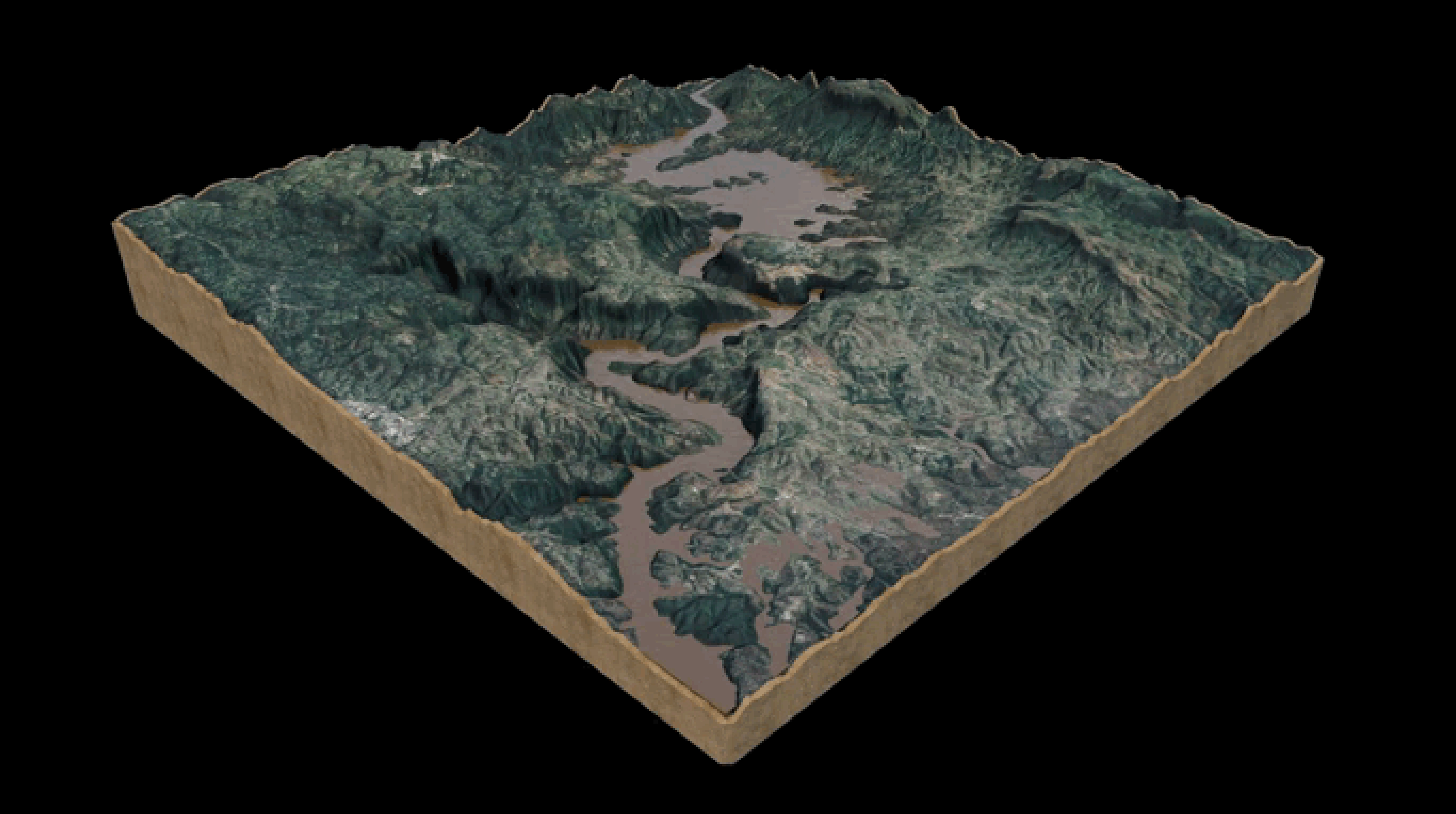
Further work will focus on whether training data from satellites could be replaced with forecasted data for inference, as this may improve accuracy and length of prediction window. You can learn more about this case study by visiting the FDL EUROPE 2022 RESULTS PAGE, where a summary, poster and full technical memorandum can also be viewed and downloaded.
The Scan Partnership
Scan is a major supporter of FDL Europe, building on its participation in the previous two years events. As an NVIDIA Elite Solution Provider Scan contributes multiple DGX supercomputers in order to facilitate much of the machine learning and deep learning development and training required during the research sprint period.
Project Wins
Development of the floodcastAI pipeline in order to increase flood warning predictions to three days ahead of potential disaster events
Demonstration that predications made by floodcastAI pipeline show a high degree of spatial generalisability
Time savings generated during eight-week research sprint due to access to GPU-accelerated DGX systems
James Parr
Founder, FDL / CEO, Trillium Technologies
"FDL has established an impressive success rate for applied AI research output at an exceptional pace. Research outcomes are regularly accepted to respected journals, presented at scientific conferences and have been deployed on NASA and ESA initiatives - and in space."

Dan Parkinson
Director of Collaboration, Scan
"We are proud to work with NVIDIA to support the FDL Europe research sprint with GPU-accelerated systems for the third year running. It is a huge privilege to be associated with such ground-breaking research efforts in light of the challenges we all face when it comes to climate change and extreme weather events"
Speak to an expert
You’ve seen how Scan continues to help FDL Europe further its research into the climate change and space. Contact our expert AI team to discuss your project requirements.
phone_iphone Phone: 01204 474210
mail Email: [email protected]
